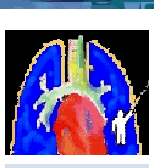Knowledge of what precautions should be taken is very useful for
any change from one environment to another. Don't be afraid of
high altitude, but be well informed and take precautions.
Our
experience of over many years dealing with high altitude disease
will prove most useful to you. This advice is mainly for
travelers to high altitude and not necessarily for mountain
climbers, although similarities exist. It is also useful for
altitudes in other places or cities.
It is important to mention this because we should not
underestimate psychological factors.
Exaggerated fear
constitutes stress and therefore a great loss of energy. Don't
waste your energy, it is fundamental for adaptation! An
explanation of exactly how fear acts on an organism would be very
complicated, but that fear can produce a fast pulse, just as if
you were exercising is a good example.
When you travel to high altitude, some facts should be known:
1.- ALWAYS take simple precautions of basic hygiene. Your
organism is immune to the bacteria and viruses that surround you
in your usual habitat and not to those of a new environment. You
should not ingest unknown foods in great amounts for the first
time upon arrival. Digestive enzymes develop a specific capacity
and function for each type of food. Although some foods taste
very good, one should NOT stuff oneself the first day. In
addition, tobacco products and alcohol should be avoided.
2.- Adjustment to high altitude is complex and varies greatly
between individuals, and in different trips for the same
individual. Some do not show any symptoms; they eat, drink, do
exercises, even compete in sporting events. However, tolerance to
high altitude does not depend on physical strength. In fact, we
have seen some athletes who have suffered High Altitude Pulmonary Edema [HAPE] upon arriving to a high altitude location. It was
later learned that as children, they had suffered from pulmonary
disease that after recovery was asymptomatic at sea level.
3.- The effects of high altitude also depend on the distance
that you have to travel, the difference in season, temperature,
and also the time of day of the arrival. Cold weather aggravates
the high altitude effects. High altitude is like an allergy to a
certain food: some people have a bad reaction, and others don't.
4.- The following advice is geared to the height of the center
(3600 m) of the bowl shaped city of La Paz (Bolivia), 3000 to
4100 meters. An escalation of just 500 meters or more creates
great differences and newcomers should take additional
precautions. After a critical height (3000 meters), the effects
grow exponentially. The La Paz airport (El Alto) is at 4100
meters. Upon arrival, avoid all unnecessary inconveniences that
take a long time, and go down to the city of La Paz as soon as
possible, but don't rush. Arriving at a good hotel will bring
comfort and security.
THE PRECAUTIONS that you take depend on your symptoms. A slight
headache, particularly at the temples, and a sensation of a lack
of air with pressure on the chest can last for some hours. This
could be accompanied by vomiting, in which case the later would
alleviate the heavy feeling of indigestion and later will make
you feel better. If these symptoms get worse and persist in the
first 12 hours of arrival, take an analgesic, like aspirin or
paracetamol, rest in bed, and cover yourself with a blanket.
If the symptoms last 24 or 48 hours and prevent you from
sleeping, do not panic, but do call a doctor, preferably a high
altitude specialist. It is best to seek medical assistance soon, as you can avoid serious complications (see below), that will later require hospitalization.
The more serious cases should receive
adequate medical attention and a precise diagnosis. High
altitude sickness generally is associated with some chronic
affection that surfaces with hypoxic stress (oxygen reduction).
In many cases the manifestations of sickness at high altitude are
due to overlooked health problems at sea level. Once diagnosed
and treated you may return home in better conditions than before
travelling!
DON'T PANIC! Immediate return is not the first solution. The
economic costs are very high, and you lose the opportunity to
complete your important mission in La Paz, or to share a vacation
with relatives or friends.
Children adapt best to the change in altitude, and paradoxically
are also those have a greater susceptibility to have High Altitude Pulmonary Edema [HAPE] with around 1% incidence, which
can be fatal unless medical help is sought.
Symptoms are:
shortness of breath, fast pulse rate, phlegm that can be blood-
stained and maybe blue lips. You might be able to detect signs
of HAPE before a physician is consulted. In 4 out of 5 cases the
tongue is white with red spots (ulcers) of varying sizes, that go
away when the condition improves. The therapy is generally based
in oxygen therapy and rest. However, there are individual variations, and it is best to be treated in a specialized clinic, that has a Hyperoxic/Hypoxic Adaptation Chamber.
Another affection that rarely presents itself is HIGH ALTITUDE
CEREBRAL EDEMA; blurred vision, unable to walk straight,
dizziness, lack of coordination and disorientation are typical;
delirium and coma in severe cases. Immediate treatment with-no
second-thoughts is also determined by medical consultation.
All who travel to high altitudes should know that the organism is
subject to a series of adaptive mechanisms in its new environment
This is valid for well adapted high altitude residents, like
those born in La Paz or in the Altiplano region (3000-4000 m),
who have to go up to the mines or panoramic areas, like ski
resort Chacaltaya (5200 m) or La Cumbre (4600 m) on the way to
their destination of the Yungas valleys (600 m), for example.
No specific and adequate medication is as of yet known for severe
cases of acute high altitude sickness (also know locally as
Sorojche). And always remember, that your illness may be
associated with a common affection that went untreated.
The most
frequently detectable causes are broncho-pulmonary disease,
hypertension, heart and kidney disease. Nowadays, the tecnology
and facilities permit adecuate treatment and health care, in a
specialized high altitude clinic. So you have nothing to fear.
The diuretic acetazolamide [DIAMOX], has been recommended to
prevent acute illness previous taken one day before ascent to
high altitude as a prophylactic. It is not 100 % effective and
you should consult a physician prior to its use.
SUMMARY OF NORMAL MECHANISMS OF HIGH ALTITUDE ADAPTATION
1.- More frequent breathing, proportional to the altitude that
you rise up to.
2.- Increased pulse (minor tachycardia)
3.- Dryness of the skin and mucous membranes, particularly in
the respiratory tracts.
4.- Minor headache in some.
SUMMARY OF CLINICAL ABNORMAL MANIFESTATIONS OF HIGH ALTITUDE
ADAPTATION
1.- Exaggerated increase in respiratory frequency, with
difficulty breathing and a sensation of a lack of air (dyspnea)
and/or cough.
2.- Exaggerated increase in pulse rate (frank tachycardia), with
a sensation of heart palpitations, precordial oppression, and a
perception of pulses in arteries of the neck and head.
3.- Sensation of pulses in the temples and ear accompanied by
nausea and headache. Increase in arterial pressure.
4.- Gastrointestinal symptoms like nausea and vomiting.
5.- Disorientation and lack of coordination.
WHY ARE WE AFFECTED BY HIGH ALTITUDE?
As at sea level, the percentage of oxygen in the air remains 21 %
at high altitude. Yet, because of the low barometric pressure,
the air is "thinner". Some individuals do not have the capacity
to adapt immediately to this lower pressure of oxygen that enters
our lungs. When supplementary oxygen is given, it actually is
increasing the concentration of the gas in the lungs,
compensating the deficit of oxygen that is required by the
organism to metabolize nutrients and convert them into energy.
DON'T BE AFRAID OF HIGH ALTITUDE, HAVE A KNOWLEDGE OF IT... AND
ENJOY YOUR STAY!!!
@Copyright 1/24/96 IPPA - La Paz, Bolivia
Last update: 5/1/2010


























